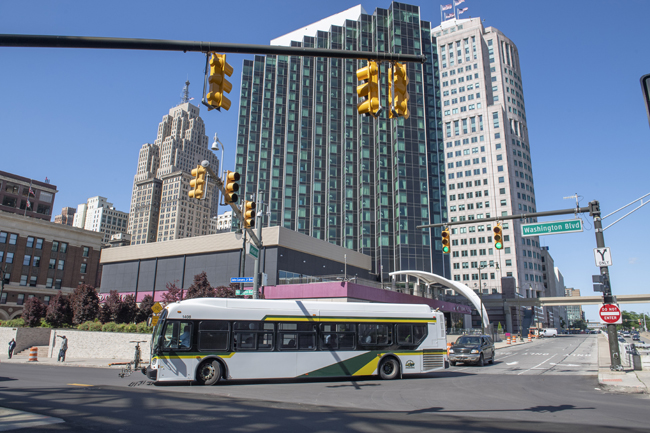
Detroit authorities have launched a ticketing scheme to encourage bus ridership – a new venture which dovetails with existing initiatives to improve mobility, Ben Spencer reports
The Detroit Department of Transportation (DDoT) has partnered with the Suburban Mobility Authority for Regional Transportation (SMART) to launch a unified payment system – called Dart - for the US region’s buses. Detroit’s mayor Mike Duggan says: “Dart will bring our two systems closer together with seamless transfers and more flexible payments making riding transit easier for everyone.”
According to the mayor’s office, riders can take unlimited rides on both systems as each pass starts on the first use for the time period allotted. Regional passes are available for reduced fare riders – seniors, people with disabilities, Medicare cardholders and young people. A Dart mobile app will allow riders to pay for travel from this summer.
Warren C. Evans, Wayne County executive, says: “Under the current system, transfers can be confusing and intimidating. Relieving that headache encourages ridership which is important to improving mobility and increasing transit options.”
L. Brooks Patterson, Oakland county executive, says: “Collaboration between SMART and DDoT to improve service for riders is a step toward providing a transit solution that works for the whole region, especially when it entails making the connection between the regional and city bus systems easier for individuals who rely on both to get to their jobs.”
Under the new Dart system, bus riders can purchase a variety of passes, from four-hour regional ones with unlimited transfers between DDoT and SMART for $2 (and a reduced fare price of 50 cents for some riders) to 31-day passes for $70 (with a reduced price of $29) which include a tap-to-pay option for easier boarding.
City leaders are already uniting to tackle transit problems in Detroit via a strategic transportation plan that will be aided by a $125 million citizen-approved bond (See ‘Public transit is weapon in war on congestion’, ITS International Nov-Dec 2018).
A separate report, Strategic Plan for Transportation, insists that transit is the ‘crucial thread’ which ties efforts for bringing Metro Detroit’s neighbourhoods together.
It offers a blueprint for improvements that can be made to streets and buses over the next four years. When fully implemented, it is expected to allow DDoT to increase its service with 10 high-capacity routes which will feature a new bus design and Wi-Fi as well as make it easier for riders to pay for the bus with mobile ticketing and off-board payments.
The city recognises in the report that reaching this goal will require strengthening its partnerships with Michigan State and region, identifying new funding and spending it wisely as well as rethinking how to deliver transportation projects. It will also seek to “break down traditional silos that exist in government” and work across departments to adopt the best practices of other cities.
Detroit’s transit blueprint
The Strategic Plan for Transportation is intended to serve as a roadmap for travel around Detroit. It includes the following values:
• Increasing economic opportunity and reducing poverty by delivering a high-quality transit service that has been lacking, reducing car insurance rates, and providing more ways for people to access every neighbourhood
• Improving public safety by reducing traffic injuries and fatalities and making everyone feel safe walking, biking, and taking transit
• Improving communications and outreach by including residents in planning processes early and often and rebooting the look and feel of the transit system





